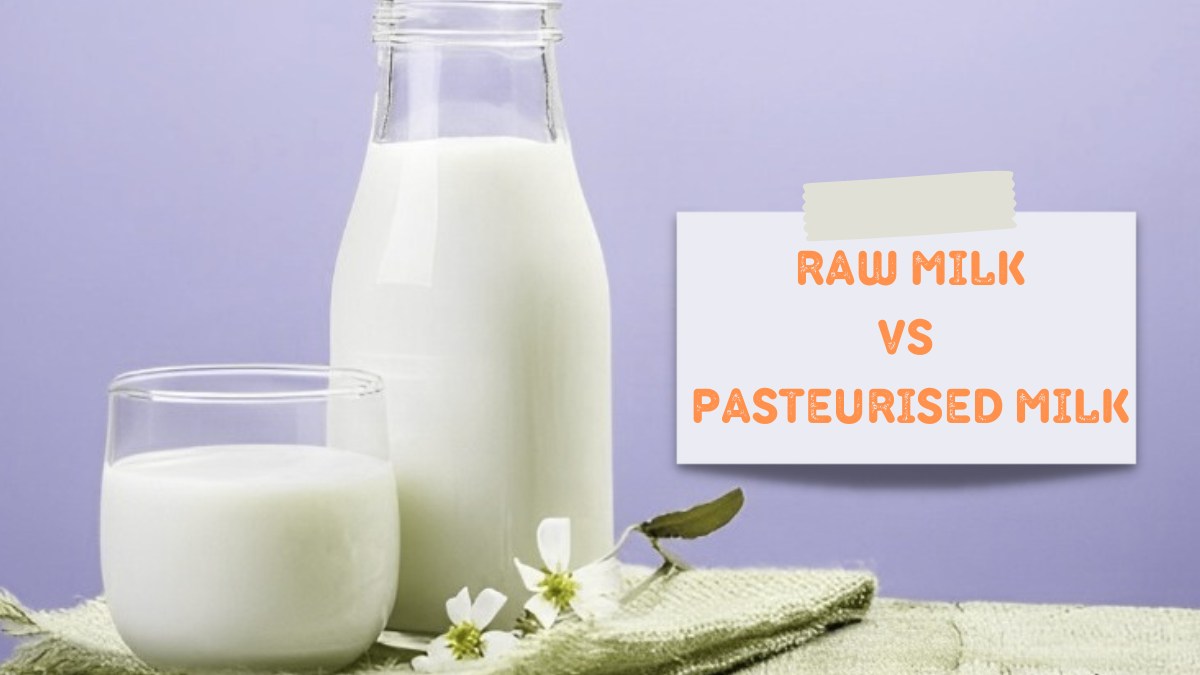
Milk is a staple food in the diets of many countries around the world. It is a rich source of calcium, protein and other important nutrients. Recently, there has been an ongoing debate about milk. Yes, you read it right. The debate is ongoing about whether raw milk or pasteurized milk is the safer and more nutritious choice.
Before delving into the benefits of milk and how to consume it, let’s look at the difference between raw milk and pasteurized milk.
The difference between fresh milk and pasteurized milk
Raw milk is obtained directly from cows, buffalos, goats, sheep, camels or any other lactating animals. It is milk that has not undergone any treatment and is “unaffected”.
Pasteurization is a heat treatment process that involves heating a liquid to a specific temperature for a certain period of time to kill any harmful bacteria present and prolong the shelf life of the product. The process is named after Louis Pasteur, who developed the technique in the 19th century.
Here are the significant differences between raw milk and pasteurized milk:
- The main difference between raw milk and pasteurized milk is that raw milk is raw milk, while pasteurized milk has been processed.
- Raw milk is unprocessed, meaning it has not undergone pasteurization or homogenization, and is in its natural state with all inherent enzymes, minerals and vitamins. Simply put, it is not heat treated to kill bacteria and other contaminating products.
- Pasteurized milk, on the other hand, is heated to a specific temperature to kill harmful bacteria and extend the shelf life of the milk which is then refrigerated. The temperature used to pasteurize milk ranges from 63 °C (145 °F) to 138–150 °C (280–302 °F) depending on the time.
- Because raw milk is not pre-processed, it contains harmful bacteria such as E. coli, Salmonella and Listeria. These bacteria can cause serious illness, especially in young children, pregnant women, and people with weak immune systems. Consumption by these vulnerable populations is discouraged due to risks associated with bacterial contamination.
- Meanwhile, pasteurized milk is considered better because it kills harmful bacteria in raw milk and makes consumption safer.
- Milk available in markets and stores has been pasteurized. There are many households, especially in India, where people buy raw milk directly from milkmen. Although fresh milk is usually boiled before consumption.
Fresh milk or pasteurized milk – Which is better?
At the beginning of the article, we told you about the ongoing debate between raw milk and pasteurized milk. Many people have the belief that raw milk is better because it is “pure” and contains all the good bacteria and nutrients. They also say that the heating process used in pasteurizing milk destroys its health benefits.
It’s simply wrong.
Healthline explains that this is not the case. 100 grams of milk contain about 3.14 g of protein. 80% of this is casein, a globular protein found in milk. When milk is heated to high temperatures during pasteurization, it has no effect on this casein because it is heat stable.
RELATED | What is the difference between yogurt and curd?
Pasteurization does not take away the health benefits of milk. It has almost the same nutritional benefits as whole milk; however, it reduces the risk of consuming the latter. Although pasteurization does not affect the nutritional value of milk, it can slightly affect the taste and texture of milk.
Overall, the decision to consume raw or pasteurized milk depends on personal preference and risk tolerance. Some people prefer raw milk for the health benefits it provides, while others choose pasteurized milk to reduce the risk of foodborne illness. While raw milk enthusiasts claim it is more nutritious and tastes better, health authorities recommend pasteurized milk as a safer choice due to the risk of bacterial contamination in raw milk. . It is important to take into account the benefits and risks before drawing conclusions.
| What is the difference between lemon and lime?
Categories: Optical Illusion
Source: pagasa.edu.vn